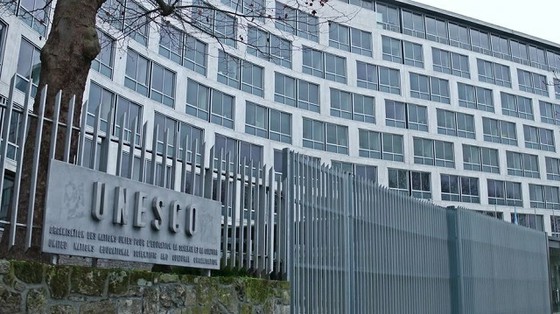 |
The "Sado Island Gold Mine" consists of two mining ruins, the "Aikawa Tsuruko Gold and Silver Mine" and the "Nishi Mikawa Gold Mine". Niigata Prefecture and others are aiming to register the mine as a World Cultural Heritage site, stating, "It is a rare mine in the world that developed a large-scale gold production system in the Edo period using traditional handicrafts that differed from those in Europe."
It is said that at least 1,000 former members of the Korean Peninsula were mobilized at the Sado Gold Mine during the war to make up for the labor shortage. South Korea claims that former members of the Korean Peninsula were forced to work, and against this historical background, South Korea has continued to oppose the aim of registering the Gold Mine on Sado Island as a World Heritage Site. The South Korean government has also set up a joint public-private task force to respond to Japan's move to have the Gold Mine on Sado Island registered as a World Heritage Site.
South Korea also showed strong opposition to the registration of the Sites of Japan's Meiji Industrial Revolution, which was registered as a World Heritage Site in 2015. Many former members of the Korean Peninsula worked at the Hashima Coal Mine (Battleship Island) in Nagasaki City, which is included in the "Sites of Japan's Meiji Industrial Revolution." For this reason, the South Korean side requested that the Japanese side provide an explanation so that the former members of the Korean Peninsula could understand the situation at the time when it was registered as a World Heritage Site. In response to this, Japan opened the "Industrial Heritage Information Center" in Tokyo two years ago. However, the South Korean side has stepped up its criticism, saying, "(The center's) exhibition does not clearly explain the suffering of former members of the Korean Peninsula who were forced to work, and the promise made at the time of registration was not kept."
In response, UNESCO adopted a draft resolution in July last year, arguing that the Japanese government's explanation of former members of the Korean Peninsula who were drafted into wartime was insufficient. The UNESCO World Heritage Committee has asked the Japanese side to make improvements with the exhibition at the center in mind, and has asked them to report on their progress by December 1st of this year.
The South Korean side has so far viewed it as a problem that the Sado Gold Mine, which also has a history of workers from the former members of the Korean Peninsula, aiming to be registered as a World Heritage Site, while the issue of the "Sites of Japan's Meiji Industrial Revolution" has not been resolved.
However, in February this year, the Japanese government formally decided to recommend the Gold Mine on Sado Island to UNESCO as a candidate for World Cultural Heritage. Expectations have risen for registration in 2023, but UNESCO pointed out the inadequacies in the nominations submitted. In July, the government announced that it would no longer be able to achieve its goal of 2023 registration. What UNESCO took issue with was the handling of the "waterway" for extracting gold dust. Since the Ministry of Education, Culture, Sports, Science and Technology has explained that the part that is currently disconnected is part of the constituent assets as a whole, UNESCO pointed out that ``the description of the geographically disconnected part is insufficient.''
At the time, there was a series of criticism from the LDP and related parties that the possibility of registration in 2023 was ruled out due to incomplete documentation. Another problem was that the Agency for Cultural Affairs had not explained to Niigata Prefecture and Sado City for about five months, even though UNESCO had pointed out the deficiencies in February.
The government revised the recommendation document, including the description of the waterway for extracting gold dust, which was pointed out to be inadequate, for registration after 2024. On the 29th, the provisional recommendation form was submitted to UNESCO. Nagaoka, Minister of Education, Culture, Sports, Science and Technology, said, "We will do our utmost to achieve the registration." Since they did not submit a provisional version last time, they could not correct it even if it was pointed out. Taking advantage of this reflection point, this time we will submit the provisional version first, and if there are any deficiencies pointed out, we plan to resubmit the official version after reflecting the corrections.
Regarding the Japanese government's submission of a provisional nomination form to UNESCO, an official from the South Korean Ministry of Foreign Affairs (equivalent to the Ministry of Foreign Affairs) said, "South Korea is not currently a member of the World Heritage Committee, so we do not have any information." Above, he repeatedly stressed that Japan should fulfill the promise it made when Gunkanjima was registered in 2015 before registering the gold mine on Sado Island. He reiterated his position.
World Cultural Heritage is determined by the World Heritage Committee, which consists of 21 member countries. According to the regulations, it is registered if two-thirds or more of the member countries agree, but it is customary to decide unanimously. South Korea plans to run as a member of the World Heritage Committee in 2023, with elections scheduled for November next year. Since the possibility of inscription of the "Golden Mine on Sado Island" has been set after 2024, if South Korea becomes a member of the World Heritage Committee, there is a possibility that it will have an even greater impact on the inscription.
2022/10/04 13:18 KST


